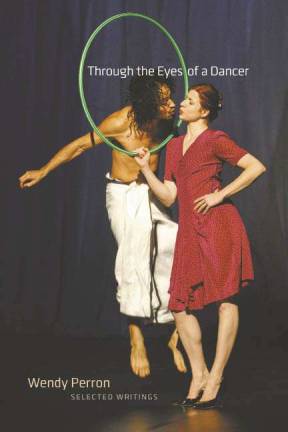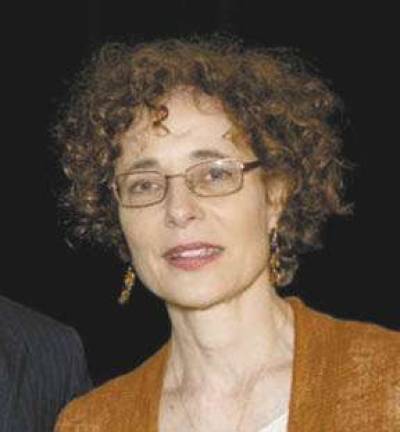The Write Steps to Dance


Author Wendy Perron chronicles her life of dance writing in a new book
At 12-years-old, Wendy Perron spent a summer at the School of American Ballet on the Upper West Side. Little did she know that decades later she would be back in that building - now a Barnes and Noble - to present a book she wrote on her dance-filled career. Her memoir, Through the Eyes of a Dancer, takes us into the world of dance in New York City past and present. At 66, Perron is now the Editor at Large of Dance Magazine and sees up to four performances a week, traveling on the 1 train from her Upper West Side home to venues like Lincoln Center, The Joyce Theater, and New York Live Arts.
In the book's acknowledgments, you thank the subway. I've never seen that before.
In 1997, I choreographed a piece about the subway. I just feel like there are so many stories; every day you see so much. I always bring editing with me, the last drafts of this book, I read on the subway.
Explain how you chose the book's title.
People were telling me that I needed a flashier title. I wanted to emphasize that everyone writes from a subjective point of view. Reviews are from my point of view as a dancer. My whole body's involved when I watch something. Dancers do have a way of seeing.
You were accepted into Juilliard. Why didn't you go there?
I had been taking classes in ballet and modern dance my whole life. And I realized that Juilliard would be more of the same on a more professional level. Something in me went for something I didn't know. I knew if I went to Bennington College, I would also be studying literature and art. It just seemed like such an opening up and that's what I went for.
After graduating college in '69, you moved to the New York. How was the city different at that time?
First of all, everything was cheaper. I was sharing an apartment at the Ansonia at 72nd. Two of us rented it for 150 dollars a month, 75 each. And we each had our own bedroom.
You touch upon the differences between uptown and downtown dance. Can you explain that concept?
Uptown has the big theaters, ballet, and there's more money and more training. Downtown tends to be more conceptual, people who aren't as trained, but who have lots of ideas on how to break the rules. You don't have to worry about big audiences downtown. But what I found about New York is that there are audiences for all kinds of dance. That's what so great about our city. But there's more crisscrossing now, uptown people coming downtown, downtown people coming to Lincoln Center.
You also talk about the talent of street performers, and even put subway musicians in a piece you choreographed for Lincoln Center.
All I can say is sometimes they're really terrific. There's one woman in the subway, Kathleen Mock, when I heard her voice it was like Joan Baez's. It's just a matter of chance, somebody gets a break and ends up at Carnegie Hall, and someone ends up on the subway. This 14-year-old boy who went to Juilliard, he played Beethoven's "Moonlight Sonata" for my piece on the subway. He would come to the subway with his keyboard and his father, and people would get so interested because he was so young and played so beautifully.
Tell us about watching Mikhail Baryshnikov perform.
I was lucky to see him soon after he defected here in the mid '70s. He deserved every bit of the fame that he got. I saw him do Giselle with Gelsey Kirkland and they were both amazing. I didn't see a lot of ballet at that time because I didn't have the money and I was a modern choreographer. Friends of mine brought me to see him. He's exactly my age, and I've followed him along the way and it's been inspiring to see how he's changed to deal with his monumental talent. Instead of just being the prince in ballet all those years, he allowed himself to change according to what his body could do and what he was interested in intellectually.
In the '80s, SoHo was the dance center of the world. How so?
It was just a hotbed of experimentation. All kinds of things were happening that you couldn't even define. All these interesting new categories. People did all kinds of things in small little lofts. Some of it became known as performance art.
The dance world was greatly affected by the AIDS epidemic.
It was just terrible. I had several friends who died. And now, I know several people who had AIDS and are doing OK. They figured out the insurance and medications. In the early eighties, nobody knew what it was and why people were losing their T cell count. It was just really scary. So many people in the dance world succumb to it. It was really a sad time.
J.D. Salinger became a friend of yours after you sent him a letter. And you think he responded because he liked the fact that you were a dancer.
Describe what you cover in Dance Magazine.
It's 87 years old and gone through difference phases. It's open to all kinds of concert dance, anything that's ever been on stage - ballet, modern, tap, hip hop, flamenco. Most of our readers have a ballet base. I like the way it covers everything, because you can be very serious about one kind of dance, but curious about the other kinds. We assume our readers have that curiosity.
On December 14th, Wendy will be at Barnes and Noble on 82nd and Broadway.
Follow Wendy on Twitter: [@wperrondancemag]